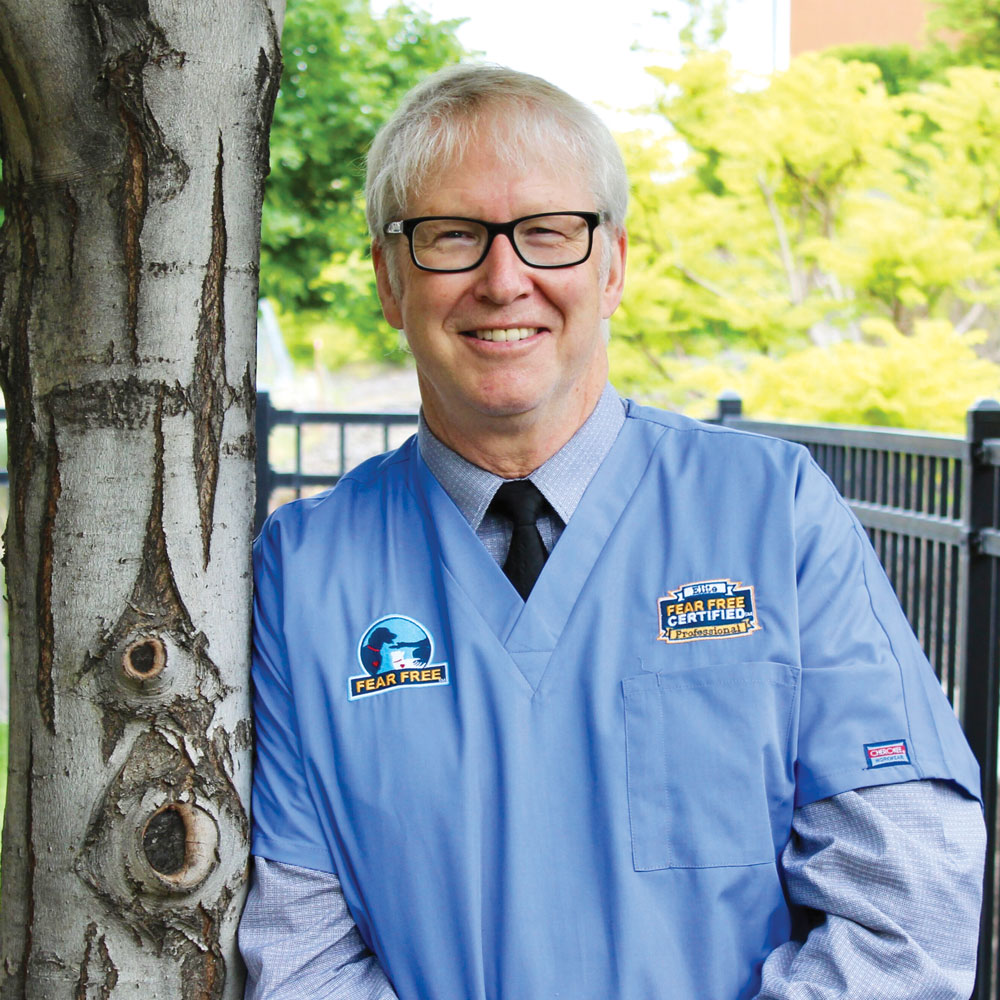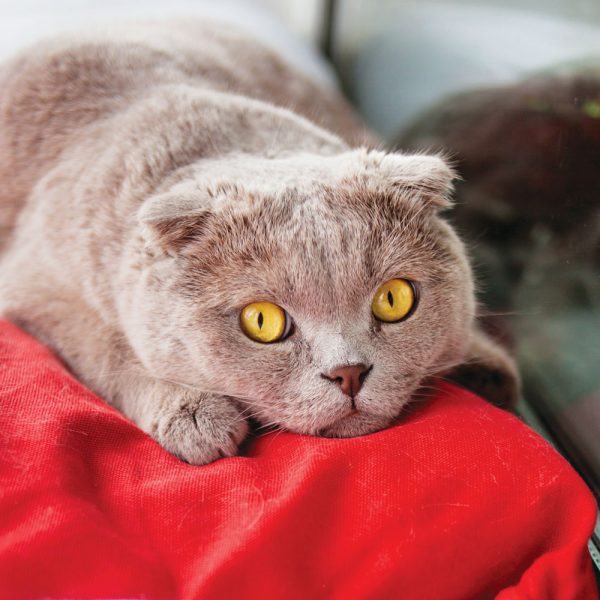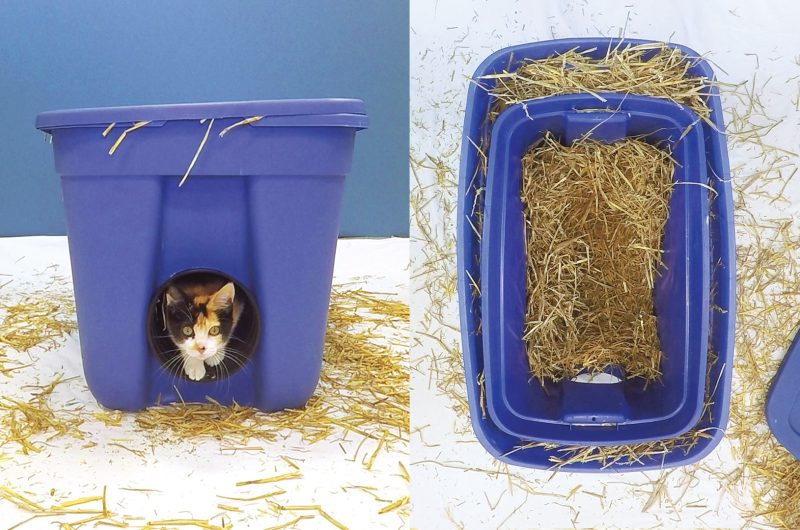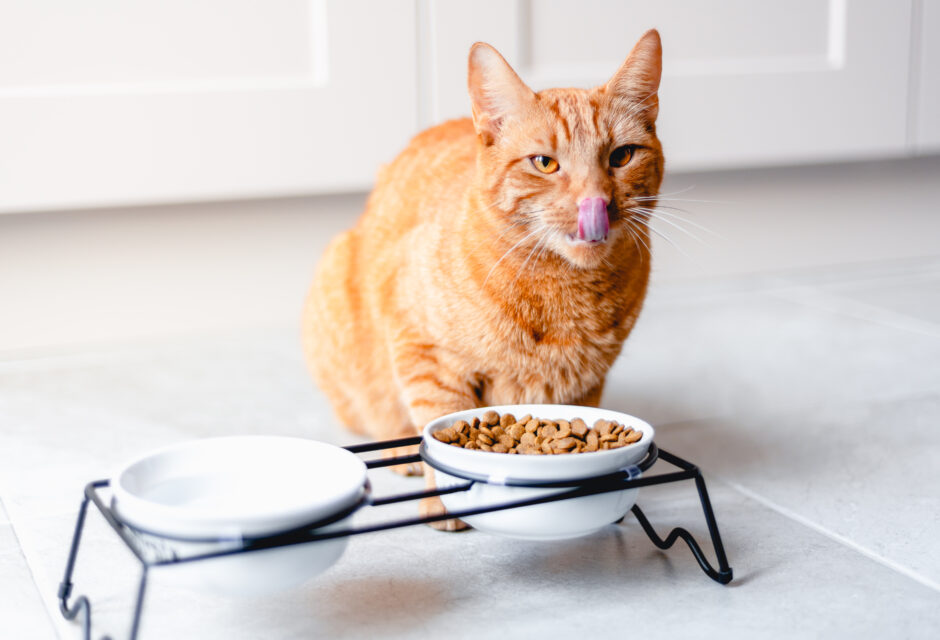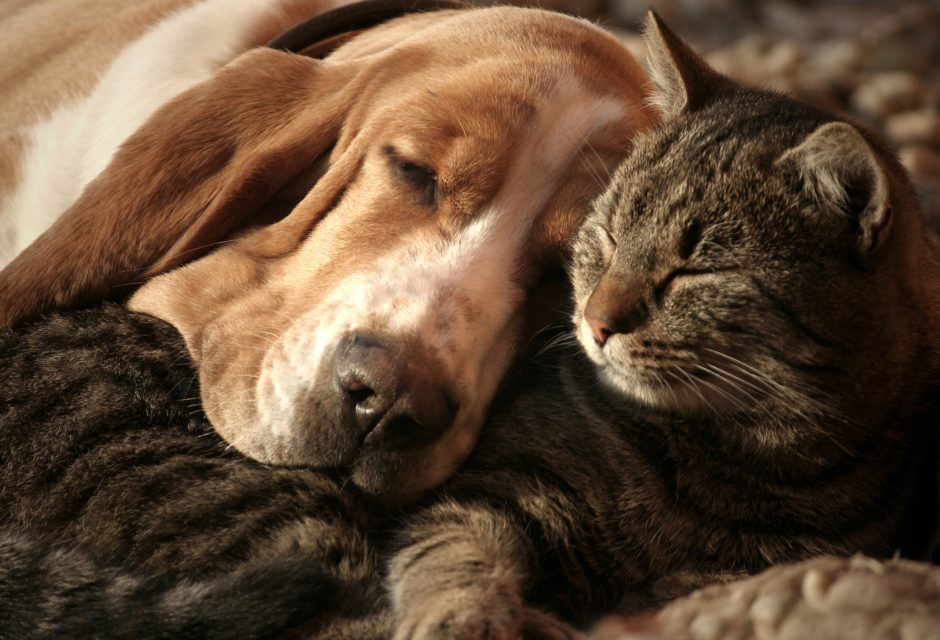
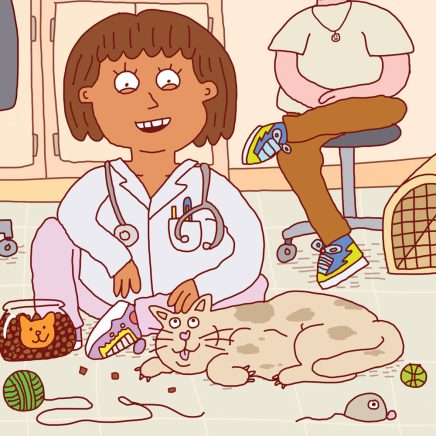
Fear Free Vet Visits: It’s Possible!
The fear-free principles of “America’s vet” Dr. Marty Becker are transforming veterinary practices and improving the emotional wellbeing of cats
Dr. Marty Becker had been a veterinarian for almost three decades—a fulfilment of his childhood dream; he’d wanted to be a vet from the age of six—when he had his “a-ha” moment. He attended a talk by veterinary behaviourist Dr. Karen Overall, who spoke on how pets were almost always taken against their will for vet visits, grooming, boarding, and training. It was a light-bulb moment for Dr. Becker.
Dr. Overall argued that those who care for animals (veterinarians, nurses, trainers, groomers) were causing repeat, severe psychological damage to pets by what they were doing—or not doing.
“Before Overall’s talk I thought the signs I saw of fear, anxiety and stress (FAS) were just collateral damage, an unfortunate part of working with animals,” says Dr. Becker. “After her talk, I knew that if we wanted to match up with our veterinary oath to prevent or relieve animal pain and suffering, we had to change the way we practiced.
That very year Dr. Marty began his passion project, Fear Free Pets, developing a set of principles and practices that would dramatically change the way pet professionals interact with the animals in their care. An online education company for pet health professionals, FearFreePets.com, followed. To date, almost 60,000 pet professionals (veterinarians, nurses, trainers, groomers) have paid and are registered for certification; of those, 37,000 have completed certification. It’s transforming practices and the lives of pets.
“Fear Free is clearly the biggest game changer in our practice in my career—and I have been practicing for 33 years!” says Dr. Robin Downing, an animal pain expert, founder of the International Veterinary Academy of Pain Management, and owner of Windsor Veterinary Clinic and The Downing Center for Animal Pain Management in Windsor, Colorado. “The idea of seeing the veterinary visit through the eyes of the patient is something incredibly novel in the veterinary profession, and yet, once you think it through, it seems pretty self-evident. Once we understand all the ways that we unthinkingly come across to the pet as threatening, like a predator, it opens the door to a completely different interaction.”

Illustration by Joren Cull
Inside a Fear Free-certified veterinary practice, the receptionists avoid eye contact with the cat and start giving treats right way. They provide the cat parent with a warm fleece blanket or towel with species-specific pheromones on it, as well as a pheromone-impregnated cotton ball to place in the cat carrier. Once in the exam room, the cat and pet parent are left in the room to listen to calming music, let the pheromones work their magic, and find where they want to be examined—on the owner’s lap, on the floor on a yoga mat, in the bottom half of their carrier, inside the sink, cradled in the scale, or up on the table. (Most exams are done with the pet on the floor.) The nurse/vet avoids prolonged eye contact with the pet and starts giving treats as soon as they enter, with a goal to give about 60 tiny treats in a 15-minute exam.
At-home Tips to Help Ensure a Stress-Free Vet Visit
Getting your cat from the living room to the exam room in a calm state is the first step, says Dr. Becker.
Here’s what to do:
- Get the carrier out a week before a wellness visit (not the night before or the morning of the visit which often causes a pet to panic)
- Start feeding high value treats in the carrier
- Start a magic carpet ride of pheromones that will go from carrier to car to clinic
- Withhold food for 12 hours before the visit (unless medically contraindicated) so that your cat comes in hungry and responds better to food rewards
- Preheat or precool the vehicle so that your cat goes from 72 degrees in the home, to 72 in the vehicle and 72 in the vet clinic
- Cover the carrier on three sides with a towel or sheet to reduce visual stimuli
- Play classical or reggae music on the way in
- Do not baby talk your cat
- Once at the practice, leave your cat in the car, go check in, and go back out and wait in the vehicle until it’s your turn to be seen.
“We are like Grandma or Grandpa,” laughs Dr. Becker. “We spoil these pets and by doing so, put the ‘treat’ into treatment!”
Everyone in the practice is wearing pheromones—the dog-pheromone Adaptil below the waist and the cat-pheromone Feliway above the waist. They make sure the cat is on a warm, non-skid surface, and use techniques such as considerate approach (avoid eye contact, turn sideways, and crouch down), gentle control (getting positional compliance in a way that doesn’t scare or harm the cat like restraint does) and Gradient Touch (making sure they let the cat smell instruments like the stethoscope or otoscope, which have been cleaned and wiped down with a pheromone wipe after each use) then touch the area they’re going to examine—like the chest to hear the heart and lungs or a back leg to vaccinate—a couple of times before they apply the instrument or stick with the needle.
“Basically, it’s like treating tiny horses,” says Dr. Becker.
If a cat’s fear/anxiety/stress levels are too high to begin with or keep rising, they’ll stop the exam/procedures and re-evaluate with three options: retreat and come back another day (“A different day and different way,” says Dr. Becker); give an oral chill pill (like generic Xanax or an FDA-approved product like Sileo) and wait 30 minutes for it to work; or go straight to sedation. “Fear Free practitioners think of sedation as a first option not a last resort and sedate early and often,” says Dr. Becker.
At Dr. Downing’s practice, they employ pre-visit pharmaceuticals to get a jump on the anxiety vet visits can provoke. “One very important addition to what we do is the liberal use of PVPs—pre-visit pharmaceuticals,” says Dr. Downing. “By using PVPs we actually prevent our patients from escalating to the torture of FAS.”
“Cats are in a room with natural light coming in through a large window, and they have the opportunity to wander about in the Feliway-infused room before we actually start their examinations,” says Dr. Downing. “Both iCalm Cat music and Rescue for disinfection [a powerful yet gentle, odour-neutral and fragrance-free disinfectant] have made a tangible difference in their reaction and response to our handling. Everyone wins in this scenario—most importantly, the pet, but also the pet owner as well as all members of the healthcare team.”
“38% of cat owners find it stressful to take their cat to the vet and 58% report that their cat hates going to the veterinary clinic.”
One of the Fear Free principles that has proven particularly transformative for Dr. Downing is examining pets on the floor. “I see ALL my canine patients who are over about 12 pounds on the floor,” she says. “And the tiny ones aren’t typically on the floor anyway—they are most often on a lap or in their owner’s arms.
“I built my veterinary hospital eight years ago,” says Dr. Julie Reck, owner of veterinary Medical Center of Fort Mill in Fort Mill, South Carolina. “It had four exam rooms and a large lobby. The large lobby made it easier for people with pets to wait. Fear Free practice has eliminated the waiting room because the goal is to reduce stressful patient interactions. We now have a small lobby and seven exam rooms! We also have calming music piped throughout the hospital as well as built-in benches that prevent pets from cowering under the seating.”
Dr. Jon Bloom, a partner at Willowdale Animal Hospital in Toronto, Canada, is also a Fear Free practitioner. “Currently, approximately 50 percent of pets have signs of FAS when visiting the veterinarian. The telltale signs are so common that most have accepted the signs as the new normal. But it doesn’t have to be that way!” he says. “Visiting the vet can be an amazing experience. Cats come out of their cat carriers and wait for me to walk through the exam room door. They can’t wait to be spoiled rotten, all during the same time while I’m examining them and providing the care they need. They are excited to enter and reluctant to leave.”
As with other Fear Free-certified vets, at Dr. Bloom’s practice they put the needs of the pet first. “If pets don’t like being up on high exam room tables, then we examine them on the floor,” he says. “If they don’t like liver-flavoured treats, then we offer them chicken-flavoured treats. If they feel more secure being near their owners, then we do their entire exam, vaccine, blood sample collection, etc. beside their owners.”
“Fear Free visits simply have a different approach, a different feel, a different vibe, and a different experience for everyone involved,” he says. “It’s healthcare the way you thought it ought to be.”
Join the newsletter and never miss out on cat content again!
"*" indicates required fields
By clicking the arrow, you agree to our web Terms of Use and Privacy & Cookie Policy. Easy unsubscribe links are provided in every email.





